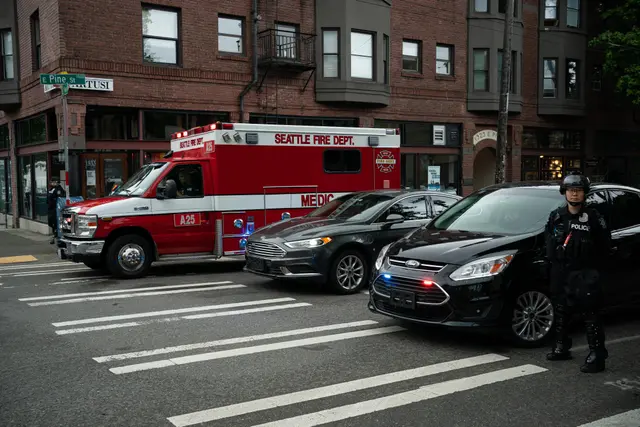Cardiac arrests that happened outside of hospitals spiked in 2021, according to a new U.S. study.
Out-of-hospital cardiac arrests were higher after the COVID-19 pandemic than before the pandemic, U.S. researchers found.
They analyzed data from Seattle and King County in Washington state from the years 2018 to 2021. The dataset consisted of 13,081 patients, including 7,102 who were dead when emergency responders arrived and another 4,952 who were treated but died ahead of hospitalization or in the hospital.
Compared to the prepandemic years, or 2018 and 2019, there were 19 percent more people who suffered out-of-hospital cardiac arrests in the pandemic period, or 2020 and 2021, researchers said. That included a 10.8 percent increase in those who survived until responders arrived and a 27.2 percent increase in patients declared dead when responders reached the patients.
The increase in those who survived was among 18- to 64-year-olds, with the rate among those 65 and older holding steady.
The numbers were the highest during 2021, after the COVID-19 vaccines were rolled out.
The researchers did not factor in vaccination status, instead aiming to examine the impact of COVID-19 on out-of-hospital cardiac arrests.
COVID-19 contributed to the downturn in survival, but only a little, the researchers said. They pegged it as responsible for 18.5 percent of the downturn.
Vaccination Impact?
Ms. Liu did not respond to a request for comment, including why the group did not analyze the possible impact of vaccination on the increase in out-of-hospital cardiac arrests. The COVID-19 vaccines can cause myocarditis, or heart inflammation, as well as other cardiac events.
“What most striking is the lack of analysis of a possible correlation of OHCA case rates with the COVID-19 vaccination campaigns that started at the end of 2020 and continued throughout 2021,” Retsef Levi, a professor of operations management at the Massachusetts Institute of Technology, told The Epoch Times via email.
“Such correlation has been observed in other studies and since the authors seem to have access to comprehensive case-level data (e.g., medical records), it looked like they could have potentially done that,” Mr. Levi, who was not involved in the research, added. “At the very least the authors should have analyzed the temporal correlation between community vaccination rates and the OHCA case rates.”


